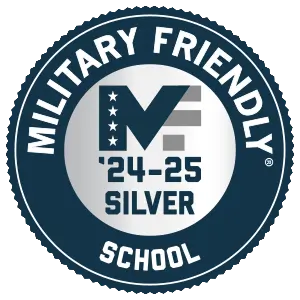What to Expect in a Practical Nursing Clinical Rotation
 Vocational school nursing programs are a fusion of classroom, laboratory, and hands-on education. Clinical rotations, the last phase of training, bring together everything nursing students learn from day one. But what exactly is involved, and what can you expect from the time you’ll spend practicing your nursing skills in a healthcare facility? Let’s explore the benefits and goals of clinical rotations.
Vocational school nursing programs are a fusion of classroom, laboratory, and hands-on education. Clinical rotations, the last phase of training, bring together everything nursing students learn from day one. But what exactly is involved, and what can you expect from the time you’ll spend practicing your nursing skills in a healthcare facility? Let’s explore the benefits and goals of clinical rotations.
What Are Clinical Rotations?
Clinical rotations are supervised work experiences in clinical settings, such as hospitals, nursing facilities, rehabilitation centers, and clinics. The length and locations vary. Nursing students may complete multiple rotations in different settings to gain exposure to a variety of patient populations and nursing specialties. You might spend a week in a labor and delivery unit and two in a nursing home.
During clinical rotations, nursing students work under the supervision of their instructors and experienced nurses. You’ll provide direct patient care, administer medications, assist with procedures, and practice documentation.
Clinical rotations are meant to be a learning experience, but they’re graded like any other practical nursing course. Throughout your clinical rotations, you’ll be evaluated on your performance and professionalism.
Why Do Practical Nurses Need to Complete Clinical Rotations?
Clinical rotations serve several key purposes, helping practical nursing students to:
Meet Licensure Requirements
Clinical rotations are a required part of the nursing curriculum in most states. Nurses must have a certain number of hours of clinical experience to be eligible for licensure.
Develop Practical Skills
There’s only so much that nurses can learn from books, there’s no substitute for hands-on care. Clinical rotations help nurses develop the practical skills required to work in a healthcare setting.
Working with an instructor, a seasoned nurse who serves as a mentor and role model, you’ll work as a nurse, practicing what you learned in the classroom.
Apply Theoretical Knowledge
Clinical rotations hone your skills as a decision-maker. You’ll apply the theoretical knowledge to real-life situations, bringing your training full circle. You’ll finally see how your learnings in anatomy class can be applied to evidence-based practice.
Gain Confidence
No program can cover every situation you’ll encounter as a nurse. You’ll have to think on your feet, relying on your classroom and clinical experience to guide your practice. Clinical rotations help you to gain confidence in your abilities.
Embrace Teamwork
Healthcare is a team effort. But it can be challenging for new nurses to relate to experienced providers. During clinical rotations, you’ll work both independently and as part of a team, learning how you fit into a multidisciplinary environment.
Find Your Mission
Nursing is a broad field. Only through working with different patient populations can you find your mission. Clinical rotations will expose you to different specialties, from cardiology to mental health, helping you to make informed career decisions.
What to Expect in a Practical Nursing Clinical Rotation
During practical nursing clinical rotations, nursing students participate in a wide range of workplace activities. Under the supervision of experienced nurses and your instructors, you will:
Provide Direct Patient Care
Nursing students assist patients with activities of daily living, bathing, dressing, eating, and using the toilet. You’ll warm up on simple tasks while awaiting opportunities to observe and then practice more complex procedures.
You’ll help people to walk and participate in therapeutic exercises, with or without assistive devices. Among post-surgical patients, for example, ambulating every few hours encourages circulation and prevents blood clots. In a nursing facility, you’ll reposition patients frequently to ward off skin ulcers.
Take Vital Signs
Practical nurses monitor patients’ vital signs, blood pressure (BP), pulse, respiratory rate, temperature, and peripheral oxygen saturation, reporting abnormal findings to the healthcare team.
Taking accurate vital signs is also an essential step in the medication administration process. Some drugs, such as blood pressure medications, are only given if the patient’s BP is too high. Your instructor will verify your readings and help you troubleshoot your techniques if the readings are flawed.
Manage Medical Equipment
Practical nurses manage many types of medical equipment from wheelchairs to ventilators. During clinical rotations, you may work with:
- Oxygen concentrators
- Portable O2 equipment
- IV and tube-feeding pumps
- Cardiac monitors
- Nebulizers
- CPAP and BIPAP
- Mechanical lifts and transfer aids
- Suction devices
- Emergency equipment, such as AEDs and bag valve masks
- Walkers, crutches, and canes
You may not have the chance to work with every piece of equipment but look for opportunities to manage as many devices as possible. Ask your instructor to assign you a respiratory patient, for example, if you need to practice using oxygen equipment and nebulizers.
Administer Medications
Nursing students assist with all aspects of medication administration. You may be asked to:
- Prepare crushed medications for patients who can’t swallow
- Reconstitute powdered drugs
- Measure injectable medications
- Administer intramuscular and subcutaneous injections
- Follow an insulin sliding scale, doses based on blood sugar readings
- Monitor patients for symptoms of adverse reactions
- Troubleshoot medication side effects
- Document administration
Your instructor may quiz you about medications and their side effects, it’s an ideal way to learn. And your instructor will offer administration tips and tricks, walking you through processes until you feel confident.
Perform Procedures
Practical nurses perform dozens of hands-on procedures, most of which require a few tries to get the hang of. You won’t have the opportunity to practice every skill, but look for chances to:
- Insert a urinary catheter
- Administer a tube feeding
- Clear a tracheostomy tube
- Change a wound dressing
- Check blood sugar
- Collect a urinary or stool sample
- Perform a neutralizer treatment
- Set up an oxygen tank
- Apply sequential compression devices
- Remove stitches or staples
- Sterilize instruments
Collaborate with Other Healthcare Professionals
Clinical rotations help nurses communicate with other members of the healthcare team. As the people who see patients the most, they serve as clinical liaisons. Nursing students attend shift reports and unit meetings with instructors to get a feel of the workflow within a medical facility. It’s all a part of providing coordinated and comprehensive care.
Educate Patients
Nurses are educators. A large part of their role is to teach patients and families how to stay well. It’s uncomfortable at first, but as students progress through clinical rotations, they begin to feel more comfortable as authority figures.
You’ll start by answering general questions, and with help, you may be asked to:
- Review discharge instructions with patients
- Explore self-care topics
- Discuss new medications
- Explain common medical conditions
By the end of your rotation, you’ll feel more confident as a teacher.
Learn to Document
Nurses are responsible for documenting patient information accurately, objectively, and comprehensively in paper charts or electronic health records. You’ll record observations, assessments, interventions, and outcomes, creating a running dialogue that other healthcare providers can follow to understand the patient’s status. The feedback you receive from the team members who read your documentation will help you refine your notes.
Reflect on Your Experiences
Nursing students meet with their instructors daily to deconstruct their day and reflect on what they learned. It’s a chance to ask questions, get feedback, and identify areas for improvement.
Throughout clinical rotations, instructors will monitor your progress, adding tasks to your plate as you can handle them. By graduation day, you’ll be ready to manage an average caseload in the setting of your choice.
How Do You Become a Practical Nurse?
Practical nurses are state-licensed healthcare providers, so with this, comes training in order to get licensed. Technical schools make this as easy as possible. To become a practical nurse, called a vocational nurse in some states, you must:
Meet the Educational Requirements
Nursing school applicants must have a high school diploma or a GED. Some programs may have additional requirements, such as specific coursework or a minimum GPA consistent with state law. If you didn’t, for example, take a basic biology class in high school, you may need one before applying.
Pass a Background Check
The facilities that host clinical rotations insist on background checks for nursing students. Any legal issues are reviewed solely as they relate to the safety and security of patients and the public. Rarely is there an issue that disqualifies applicants from being nurses.
Choose the Right Vocational School Program
Practical nursing programs are available through vocational schools, full-time students graduate in as little as 1 year. Prospective students should research and compare programs to find the one that best meets their needs. Ohio Business College, for example, provides an accredited program, a good reputation in the community, and lifestyle-friendly training options.
Pass the NCLEX-PN
After graduation, you’ll need to sit for the NCLEX-PN to become licensed as a practical nurse. The exam assesses your knowledge and competency in areas such as patient care, pharmacology, and nursing practices. Pass and you’ll be ready to start your new career.
Vocational schools support you every step of the way with exam-focused learning and study opportunities.
Get Licensed
Each state has unique licensing requirements which may include a more comprehensive background check and proof of education in addition to a passing grade on the NCLEX-PN. Visit the Ohio Board of Nursing website for details.
Many states also have continuing education requirements to maintain your license. You can take online courses or attend professional development seminars for the necessary credits.
Final Thoughts
Clinical rotations are the culmination of everything you learn as a nursing student. It’s your chance to practice procedures, develop your communication skills, and work out the kinks in your practice. Clinical rotations may not be easy, but they’re fun and always worth the effort.
Want to Learn More?
The Practical Nursing (PN) Program provided by Ohio Business College is 44 weeks or four quarters in length. The program covers a combination of theory, nursing skills lab, simulation lab, and clinical experiences. Once you graduate from the PN program, you will be fully qualified to write to the NCLEX-PN® to become licensed as an LPN in the state of Ohio.
Contact us today to learn more about our practical nursing program.

